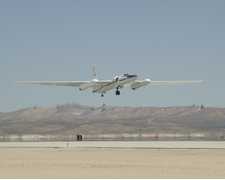The University of Bergen Bismuth-Germanium-Oxide (UIB-BGO) detector is an in-situ airborne gamma ray sensor. It consists of three BGO scintillator bars, each connected to photomultiplier tubes (PMTs), and a small LYSO detector to measure high fluxes of gamma rays. UIB-BGO is primarily used to study terrestrial gamma-ray flashes (TGF) within thunderstorms. The detector has a time resolution of 27 nanoseconds and covers an energy range of 300 keV to about 40 MeV.

Instrument Details
- X-ray / Gamma Ray
- Earth Science > Spectral/engineering > Gamma Ray
- Troposphere
- 27 ns
- N/A
- N/A
- Currently unavailble
Nikolai Østgaard
Nikolai Østgaard
UIB
Currently unavailable
Currently unavailable
Unpublished
 NASA Earth Resources-2 Aircraft 63 Campaigns · 109 Instruments |  Airborne Lightning Observatory for FEGS and TGFs 2023 Florida, Gulf of Mexico, Central America, Caribbean Sea 1 Deployment · 5 Data Products
|
Filter data products from this instrument by specific campaigns, platforms, or formats.
CAMPAIGNS
PLATFORMS
FORMATS